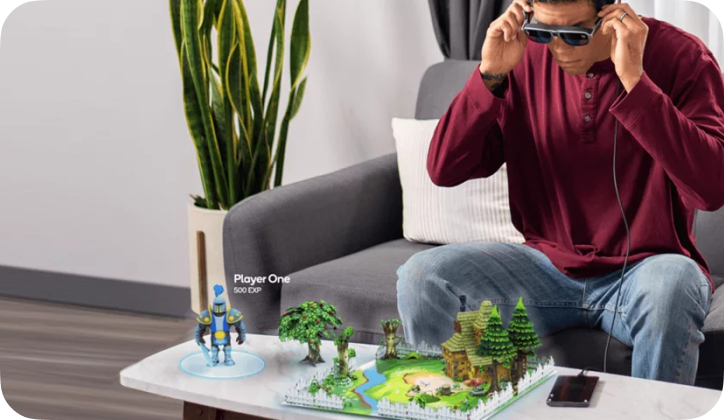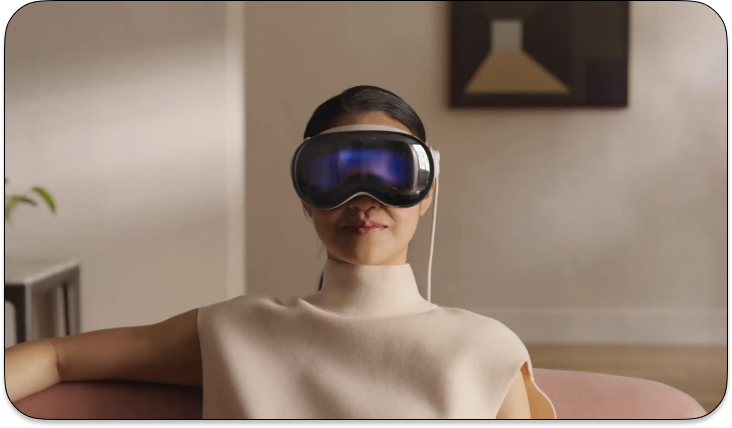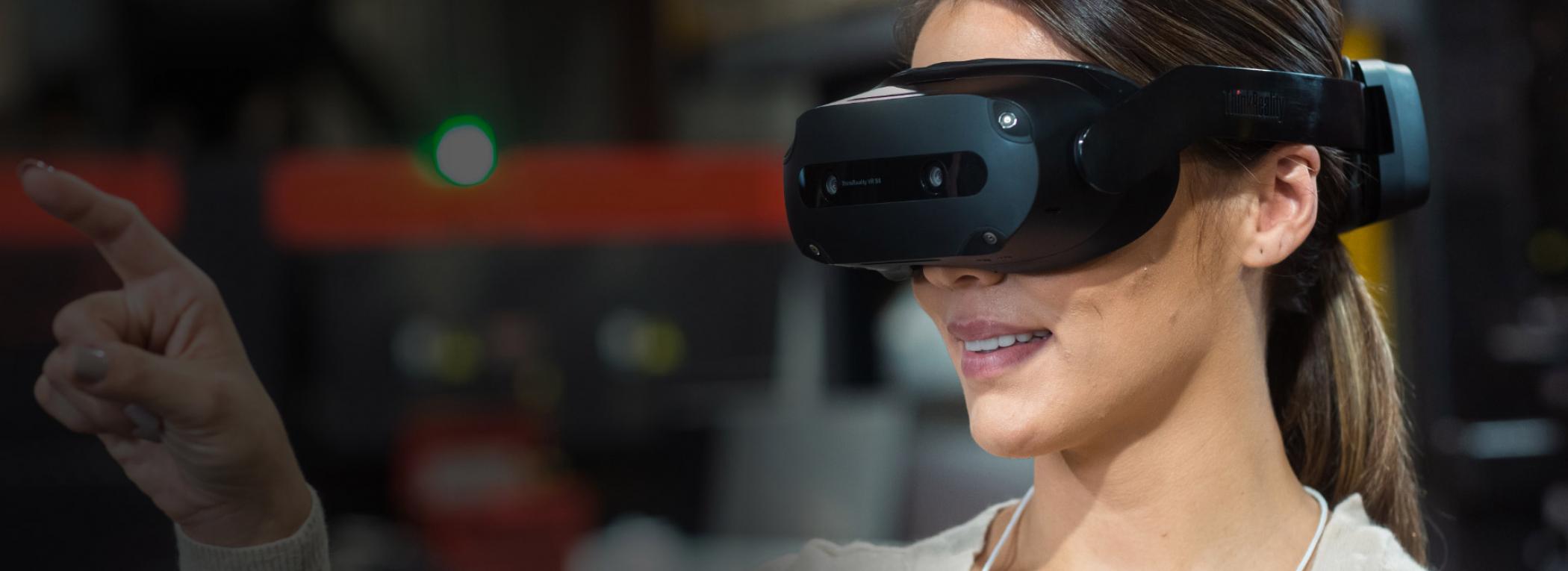How Qualcomm and Apple are boosting the immersive technologies industry
Table of Contents
What is appealing is that both players are making similar technological adaptations that appear harmoniously aligned with each other. Each move from either player is symbolic of their 360 approach in the XR market, looking at it from every angle and considering various factors such as hardware, software, content, user experience, and ecosystem integration. Starting from every integral part of a system – hardware, software and content, both companies loop the ecosystems around their own (Apple) or their partner’s solutions (in particular, Qualcomm solutions are created to operate on Android devices such as Lenovo ThinkReality VRX and Lenovo ThinkReality A3 headsets which are powered by Qualcomm chipsets). Both companies strive to deliver the most value for consumers and businesses willing to stretch the limits of reality by providing solutions through the benefits of the ecosystems. We will outline them further to see how new launches complement their ecosystems and empower the synergy within them.
It’s the holistic approach that’s shaken the industry to its core, augmenting every aspect to provide a well-rounded solution to customers. Trends have been set, and new expectations created, shaping the direction in which the market is developing.
In this blog, we’re going to highlight the resemblance in both giants’ approaches to disrupting the market via ecosystems, explore the trends and determine the trajectory of the immersive technologies industry.
Snapdragon Spaces
Snapdragon Spaces is an ever-evolving XR platform that powers AR and VR experiences on Qualcomm-powered devices, such as Lenovo ThinkReality VRX and Lenovo ThinkReality A3 headsets. Developers can become architects in XR, where they have the freedom to create unique experiences. The room for creativity is immense.

Source: Qualcomm
The open platform integrates robust tracking and mapping capabilities, enabling real-time positioning and object recognition. It also supports interactive and dynamic content, allowing users to react in a virtual environment with enhanced realism and interactivity.
Key features and capabilities
-
Positional Tracking tracks the user’s head, body, and AR glasses’ position, enabling the rendering of digital content that moves and anchors to real-world objects.
-
Local Anchors and Persistence allow developers to create local anchors that remain in place even as the user moves, ensuring the persistence of digital objects across AR sessions.
-
Image Recognition and Tracking recognize and track real-world images and objects, enabling interactive AR experiences that interact with the user’s surroundings.
-
Object Recognition and Tracking identifies and tracks physical objects, facilitating AR experiences that interact with real-world objects.
-
Plane Detection: detects flat surfaces in the physical world and allows AR experiences to be anchored to those surfaces, such as displaying a digital game on a table.
-
Spatial Mapping and Meshing: generates a spatial map of the environment, enabling AR experiences that are aware of the user’s surroundings and can avoid obstacles or provide contextual information.
-
Occlusion: hides digital objects behind real-world objects, enhancing the realism of AR experiences.
-
Scene Understanding: comprehends the scene, including objects, relationships, and lighting conditions, contributing to more realistic and immersive AR experiences.
-
Hand Tracking: tracks the user’s hands, enabling intuitive interaction with digital objects using hand gestures.
Apple Vision Pro
The Apple Vision Pro is an XR headset that provides both virtual and augmented reality capabilities. Users will be able to enjoy a wide range of features, including high-resolution displays, precise motion tracking, spatial audio, and intuitive controls.

Apple Vision Pro. Source: Apple
It’s a powerful mixed-reality device that blends the digital and physical worlds, opening up new possibilities for entertainment, productivity, education, and communication.
Key Features and Capabilities
Apple Vision Pro offers a range of impressive features and capabilities that set it apart in the world of mixed-reality headsets:
-
Unparalleled visual clarity: With its ultra-high-resolution display, Vision Pro delivers exceptional detail, perfect for immersive experiences like gaming and movie-watching.
-
Cutting-edge R1 chip: Powered by the advanced R1 chip, the Vision Pro ensures a seamless and immersive mixed reality experience. Its high-speed processing capabilities enable swift response to user input.
-
Immersive Spatial Audio: The Vision Pro’s Spatial Audio system creates a captivating sound environment, surrounding the user with realistic audio cues, making it particularly suitable for gaming and applications requiring spatial awareness.
-
Intuitive visionOS: Operating on the visionary visionOS, an operating system tailored for mixed reality, the Vision Pro provides effortless interaction through eye tracking, hand gestures, and voice commands, enhancing user engagement and ease of use.
-
EyeSight for real-world awareness: The innovative EyeSight feature enables users to maintain awareness of their surroundings by allowing them to see through the Vision Pro. This feature fosters interaction with the real world while using the headset, ensuring safety and seamless social interaction.
Emerging trends
Integrated Ecosystems
Both companies have established ecosystems where users can integrate across different platforms. As usual, Apple’s ecosystem is centred around Apple devices and operating systems. The Apple Vision Pro headset is a genuine part of it; it was designed to work seamlessly with already existing products such as iPhones, Macs, and other devices, allowing users to tap into their existing apps and utilize familiar development tools like Xcode.
On the other hand, Qualcomm’s Snapdragon Spaces is leveraging open platforms such as Android, OpenXR and others. Users can get the full power of the Snapdragon chipset on compatible Android devices, which serve as the ecosystem’s foundation. Users can hop between a range of different applications and content that’s specifically designed for Snapdragon Spaces.

Lenovo ThinkReality VRX. Source: Lenovo
At the core, the integrated ecosystem appears to be the trend, but if we dig deeper, the actual pattern emerges: providing users with a unified experience.
Both Qualcomm and Apple prioritize the seamless integration of hardware, software, and content, aiming to eliminate fragmentation and ensure a consistent user journey across platforms.
With either technology, users can:
-
Use the same content and experiences on different devices.
-
Create and share immersive experiences.
-
Access a wide range of features and functionality.
Content-centric approach
A sophisticated XR headset offers little utility without content – users need a reason to engage with these devices. Qualcomm and Apple recognize this and have adopted a content-centric approach to enrich the user experience.
They have done so by:
-
Enabling developers to create and share content means a wide variety of content available for users to explore, and it’s easy for developers to create new content.
-
Designing the platforms to be open and interoperable indicates that content created for one platform can be easily shared with users of other platforms.

Source: Apple
Here are some specific examples of how Apple and Qualcomm have adopted a content-centric approach:
-
Apple Vision Pro includes a number of features that make it easy for developers to create immersive content, such as support for 3D object tracking and hand tracking. Additionally, Apple Vision Pro is integrated with Apple’s App Store, which makes it easy for developers to distribute their content to users. It also allows users to run their existing iOS and macOS applications straight in the virtual space of Apple Vision Pro.
-
Snapdragon Spaces is based on OpenXR SDK, which means it is compatible with a wide range of devices. Additionally, Snapdragon Spaces includes several features that make it easy for developers to create immersive content, such as support for 360-degree video and positional audio.
What’s more, their emphasis on content is also reflected by their compatibility with Unity – a popular game development engine. Unity is widely recognized and used by developers for creating 3D content: games and interactive experiences.
By collaborating with Unity Technologies, Apple and Qualcomm are tapping into a vast community of developers already familiar with the platform. This strategic partnership allows content creators to leverage their skills and knowledge in Unity to develop applications and experiences for Apple Vision Pro and Snapdragon Spaces.
Final Thoughts
Qualcomm and Apple have boosted the XR industry with their 360-degree perspective, considering all aspects to maximize the user experience with ecosystem synergy. They imply hardware, software, content, user experience, and ecosystem integration. Both companies wind the ecosystems around their own solutions for Apple and their partner’s solutions for Qualcomm.
Integrated ecosystems have become a prominent trend, where users can access various applications, content, and features across different devices within the system. Focusing on unified experiences has driven both technologies to prioritize hardware-software-content integration, ensuring a consistent user journey alongside the high-end fidelity of the immersive worlds they offer to users.
Recognizing that immersive experiences rely on creating compelling content, both Apple and Qualcomm collaborate with Unity Technologies, creating an opportunity for developers to construct powerful content to enhance the functionality of the headsets, giving users more ways to interact with the world around them.
By nurturing innovations, both ecosystems have collectively established a fresh set of expectations regarding the essential features and value each XR technology developer should offer.
What will this technological advancement bring to the table for the companies that foresee XR and its benefits incorporated into their future growth strategies?
With the seamless harmonization of all the elements, they empower the growth of the XR market and offer new opportunities to businesses and organizations that digitize their processes, services and products. As an early adaptor of the mentioned ecosystem’s benefits, Lucid Reality Labs experts will help you see the future of your business growth through XR. Please don’t hesitate to reach out.
About Lucid Reality Labs
Lucid Reality Labs is a visionary XR development company that crafts complex immersive solutions through spatial technology – from concept & design to development & support, with a strategic focus on Healthcare, Life Science, Aerospace & Defense, and many more. We equip industries with the boundless potential of immersive technology. The Lucid Reality Labs’ Team believes that XR can contribute to the improvement of the quality of life for people around the globe. With our mission of disrupting global challenges with responsible technology, the company delivers solutions with impact that elevate industries with immersive capabilities. Check the award-winning use cases created by Lucid Reality Labs here.
Authors: Lucid Reality Labs marketing team & subject matter experts.
Main image source: media.revistaad.es
